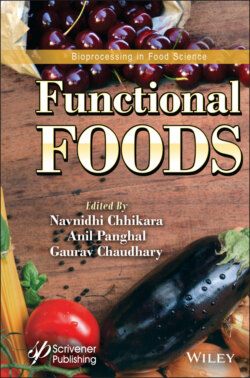Читать книгу Functional Foods - Группа авторов - Страница 13
1.1 Introduction
ОглавлениеThe saying: “Let food be thy medicine and medicine be thy food” was embraced 2500 years ago by Hippocrates. In 21st century, more of research reports advocated the importance of healthy diet for health promotion as well as disease prevention and also treatment. This further focused on the identification and characterization of biologically active compounds from different food substrates and their contribution to various health benefits. The new sources of these compounds have been explored to meet the increasing demands. The increased awareness about health and income of the consumer has forced the researchers and industries to come up with good quality food products, which are known as: “Functional foods.”
The term ‘functional food’ was coined in Japan in the early 1980s. Although there is no universal definition of functional food, a typical and simple definition is “processed foods having disease-preventing and/or health-promoting benefits in addition to their nutritive value.” Functional foods overlap with nutraceuticals, medical foods, probiotics, designer foods, pharma-foods, and vita foods. Japan is also the first country to have formulated a specific regulatory approval process for functional foods. In 1991, the concept of foods for specified health use (FOSHU) was established [1]. Functional food might be containing one or more specific functional ingredients or be completely a natural food that promotes positively to health and well being. Importantly, functional foods do not necessarily induce a health benefit in all members of the population.
